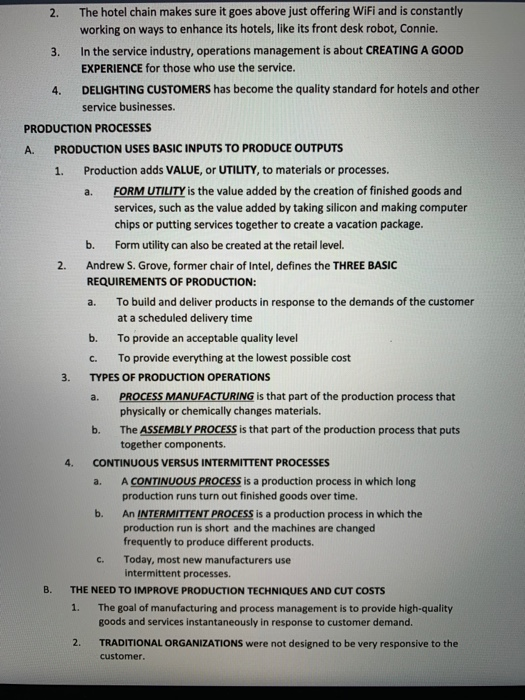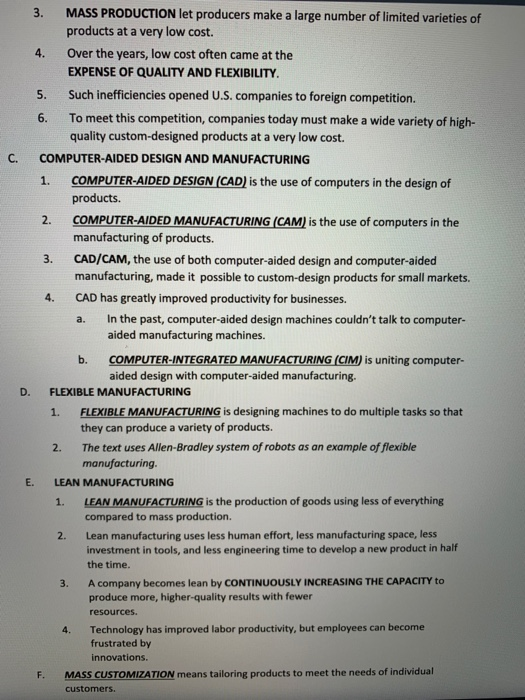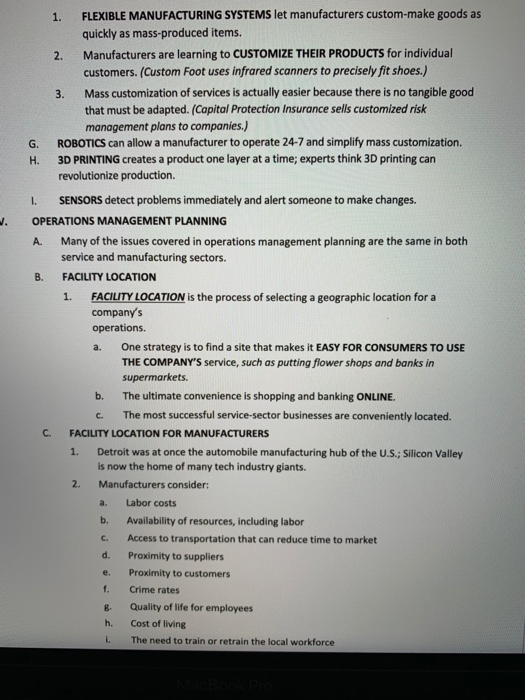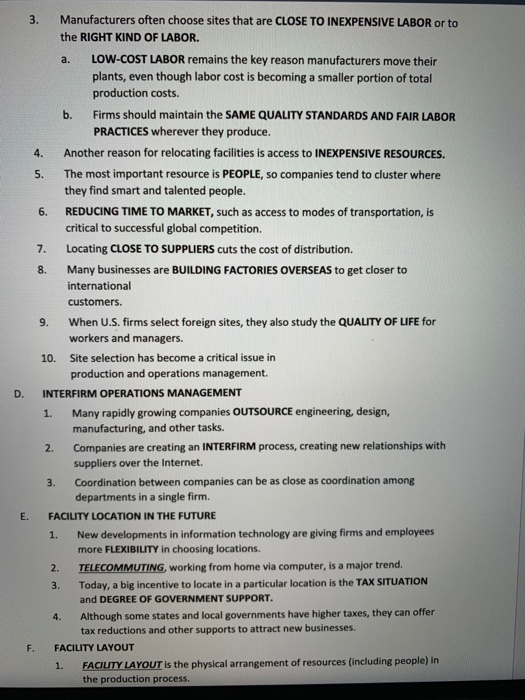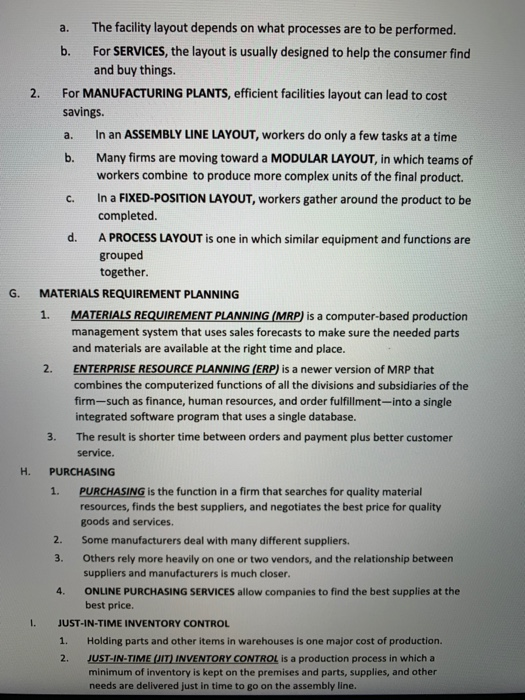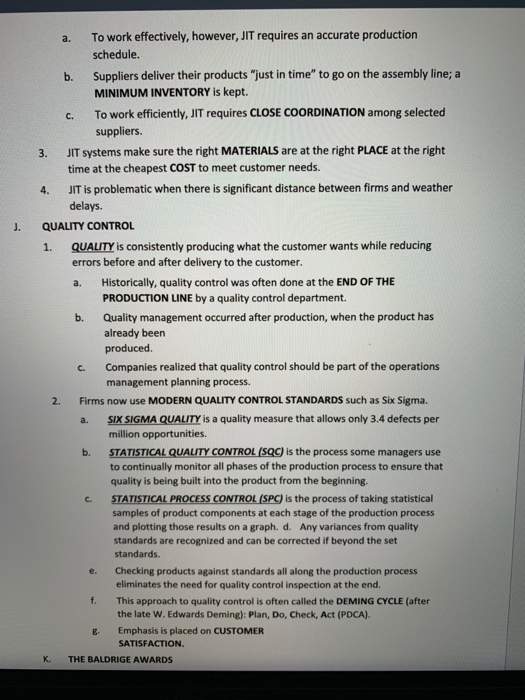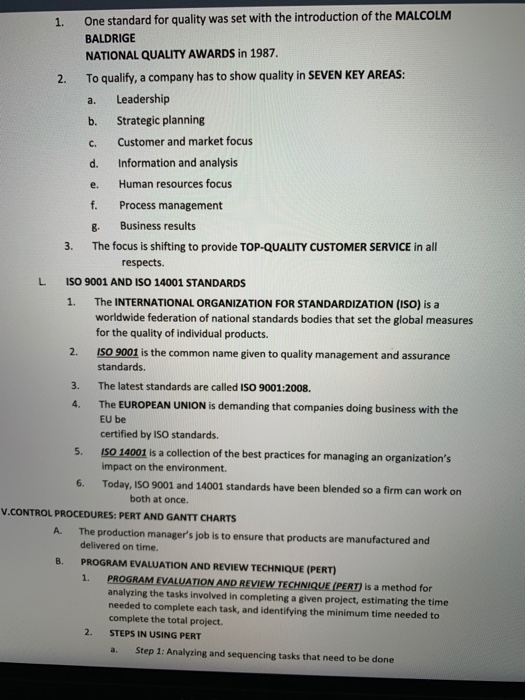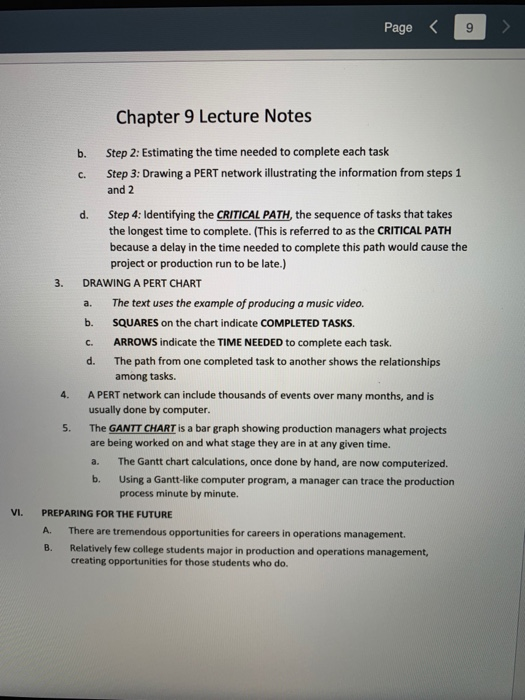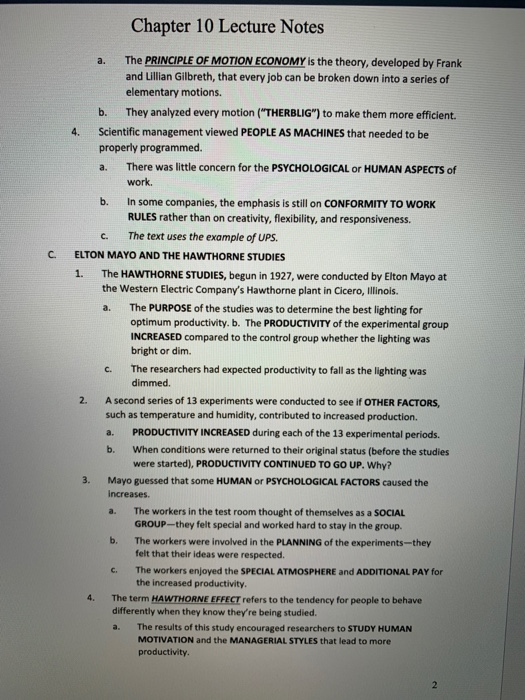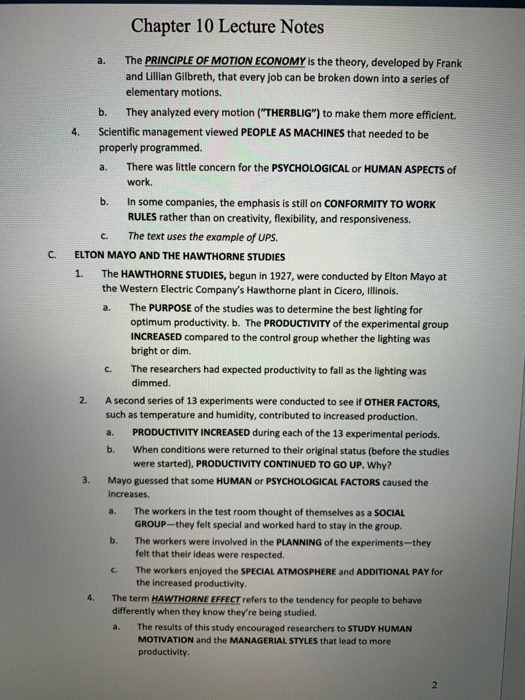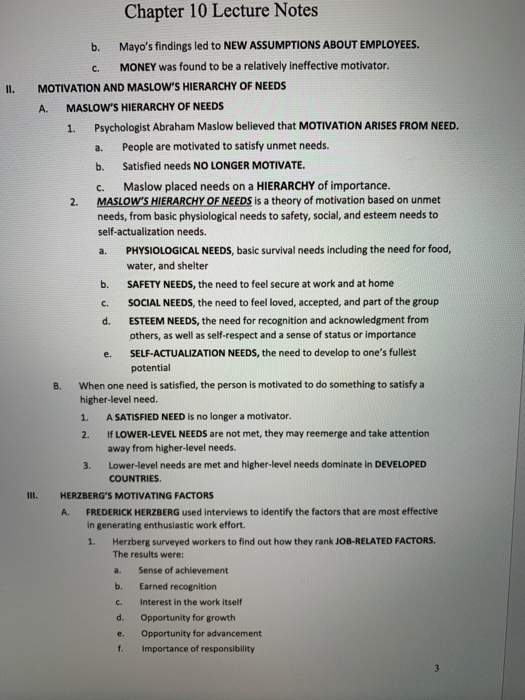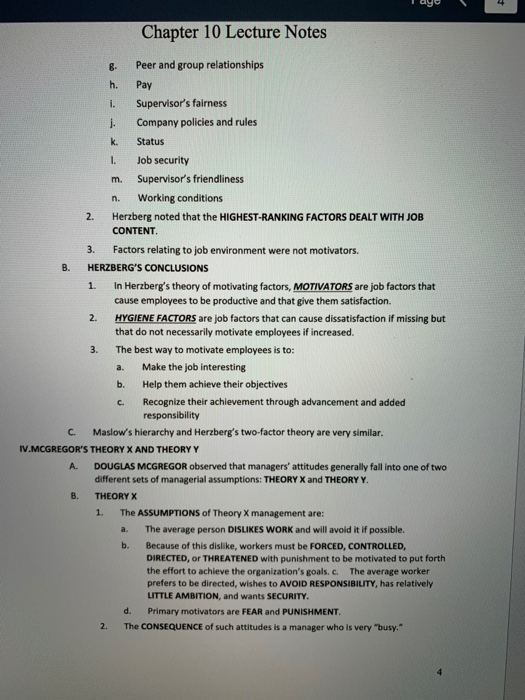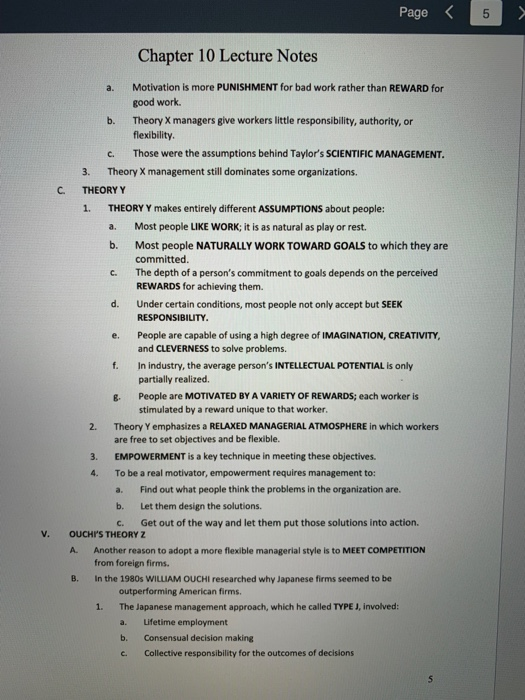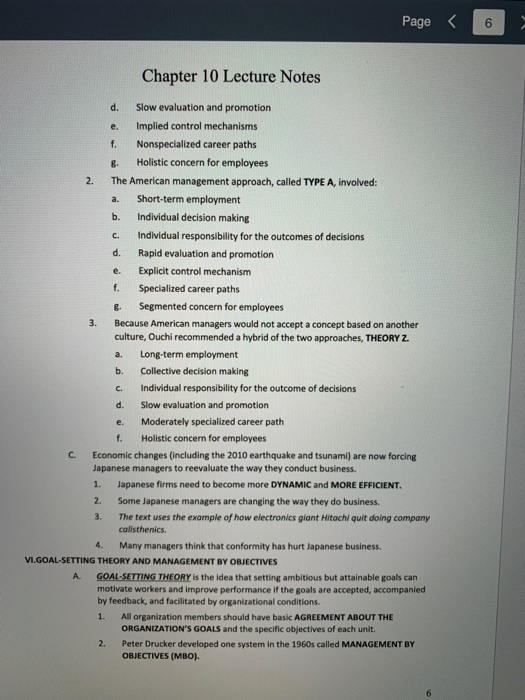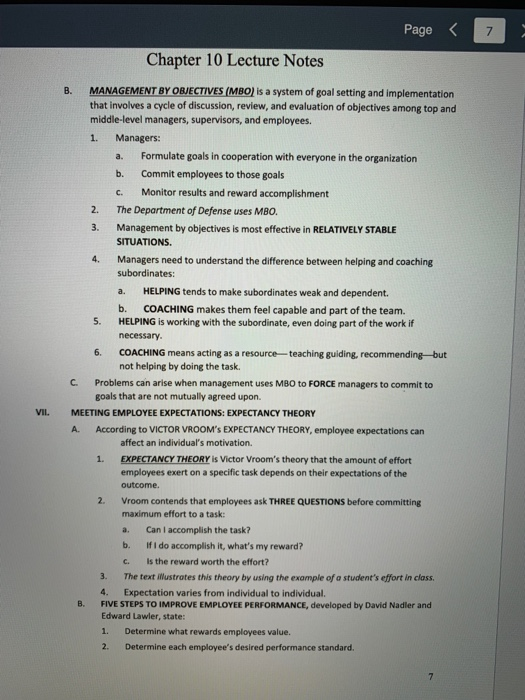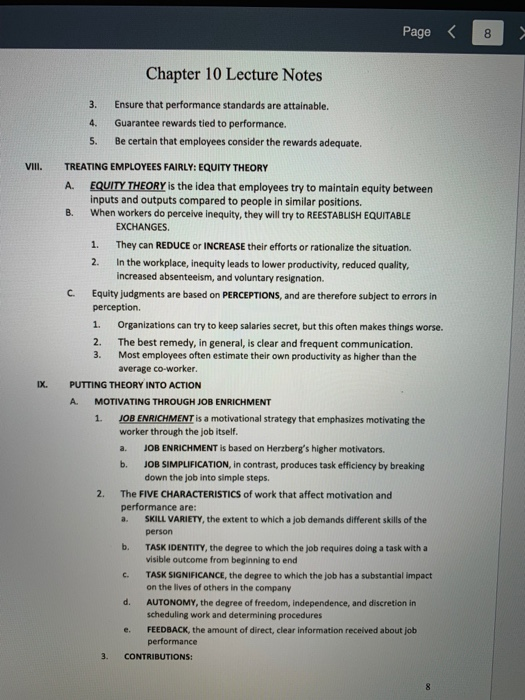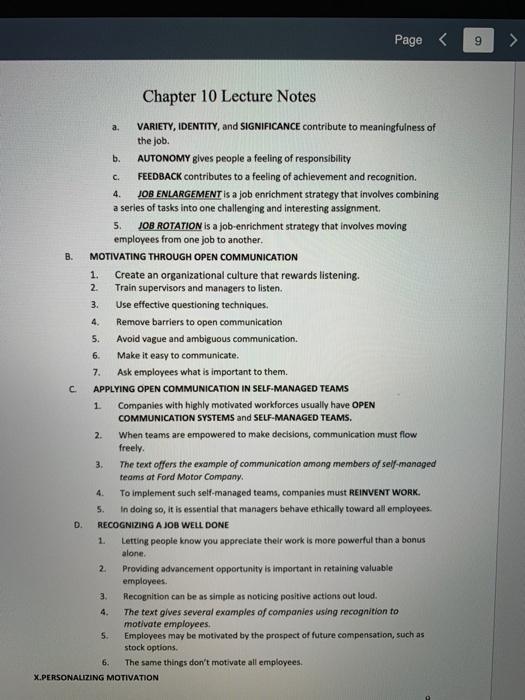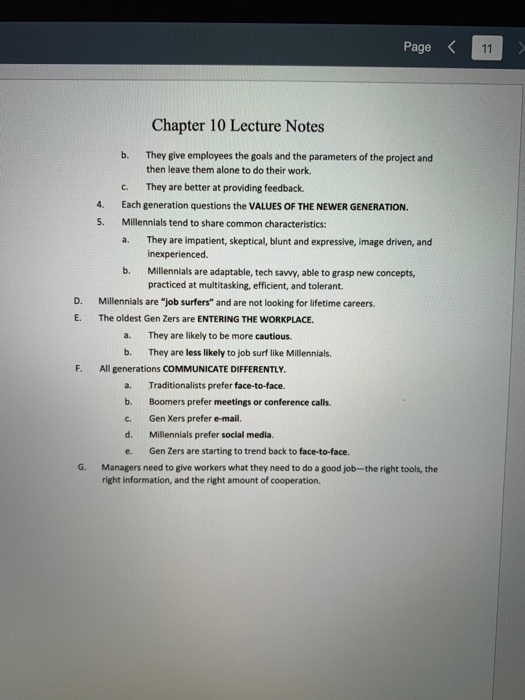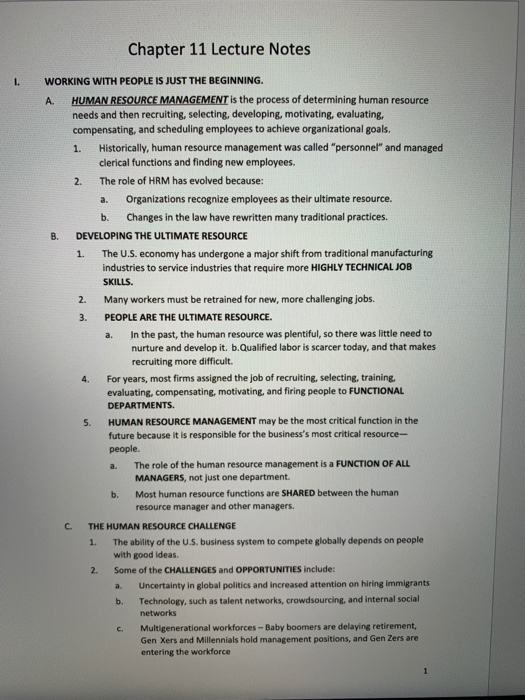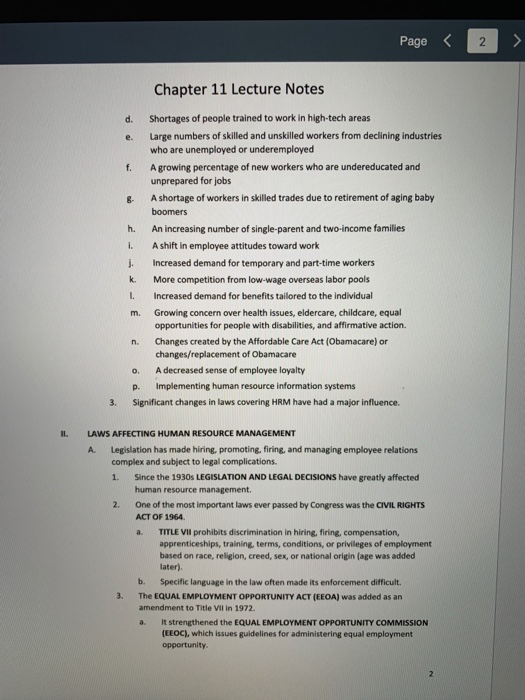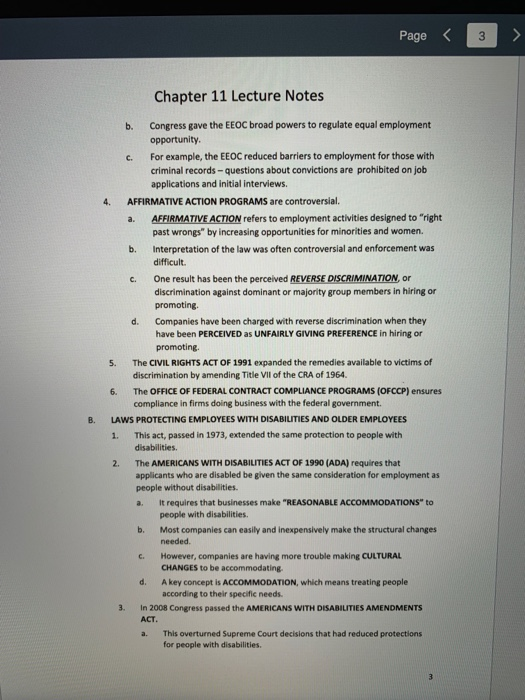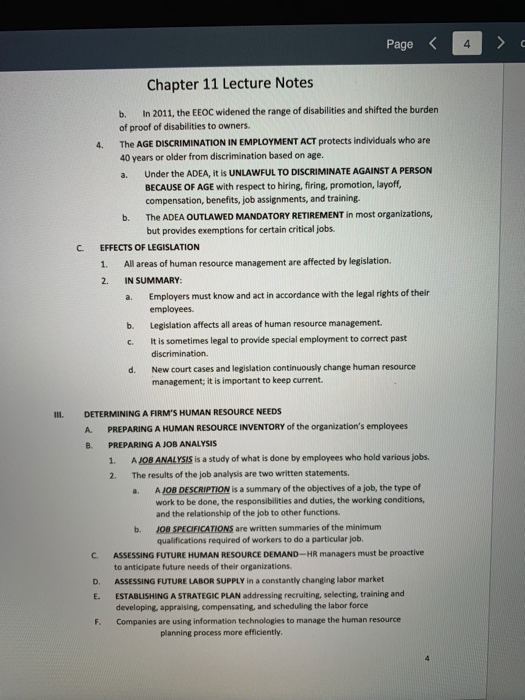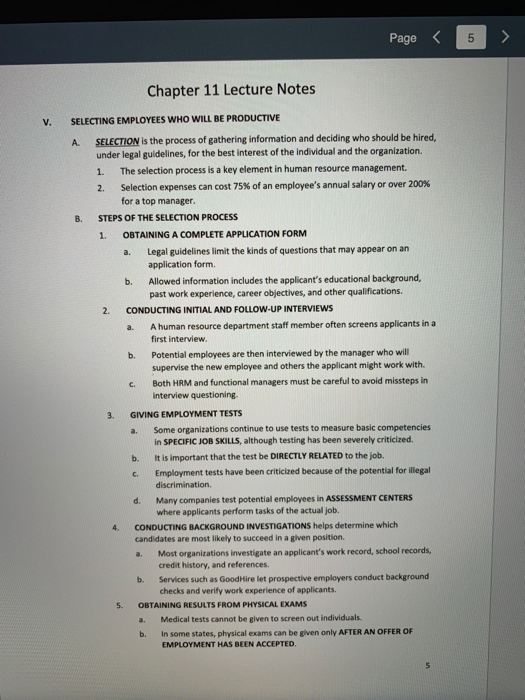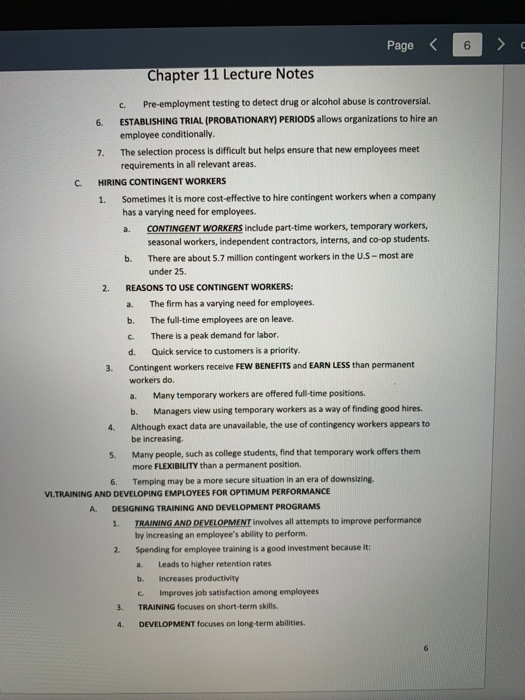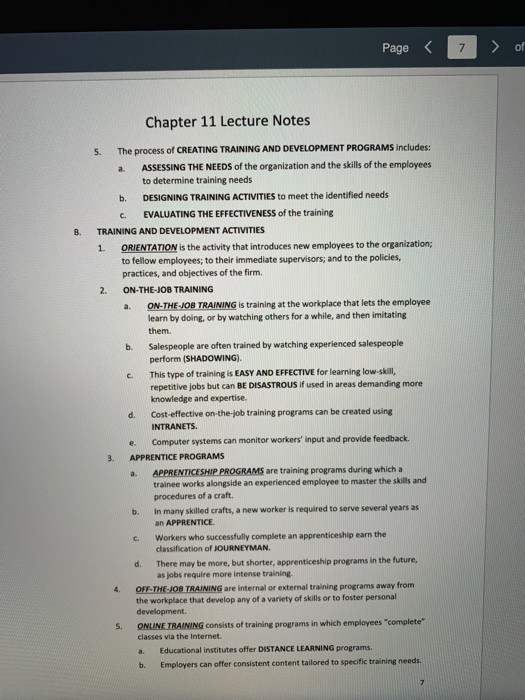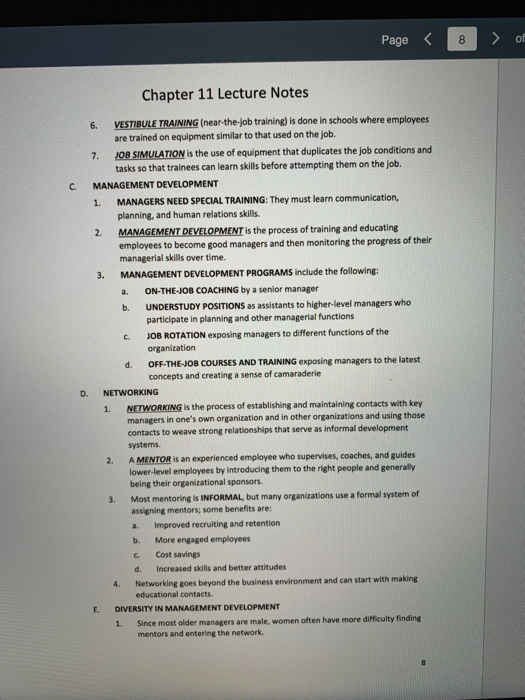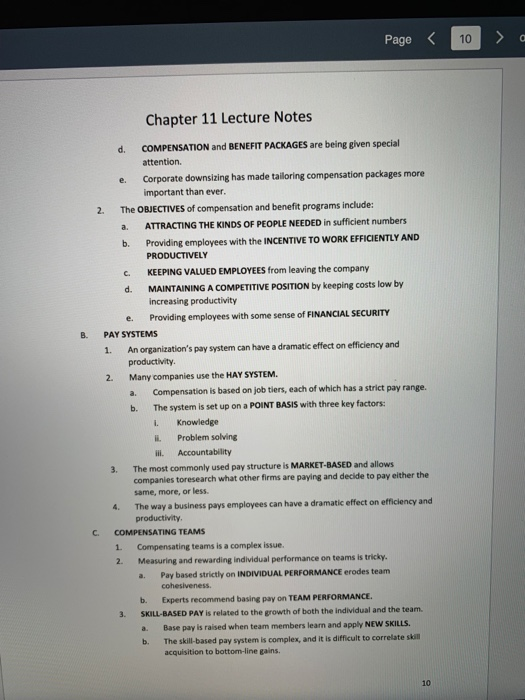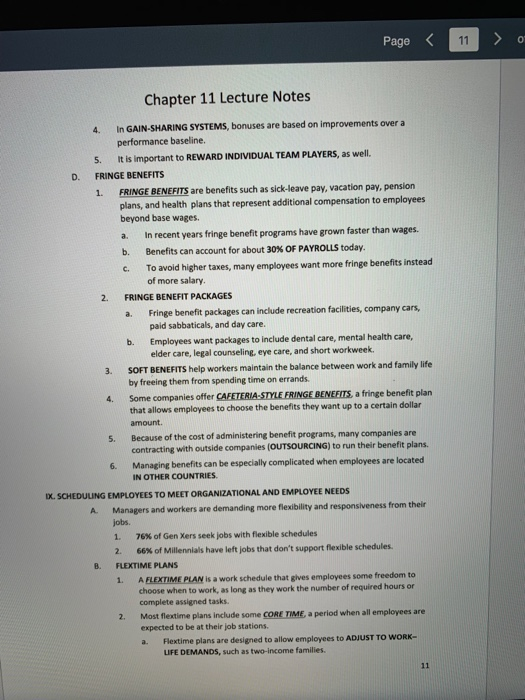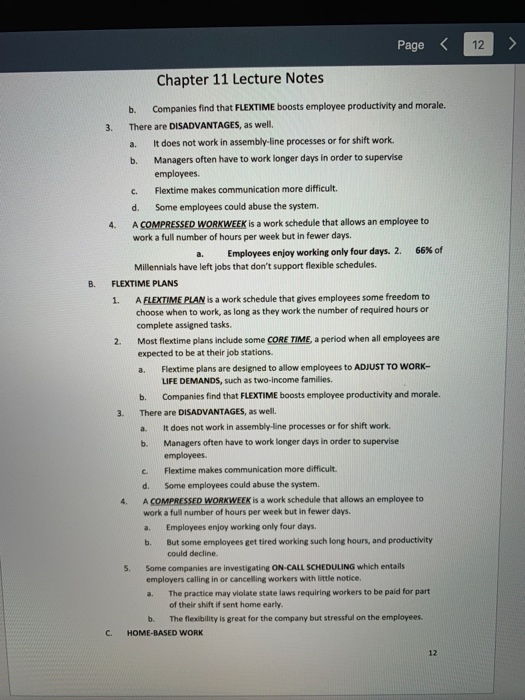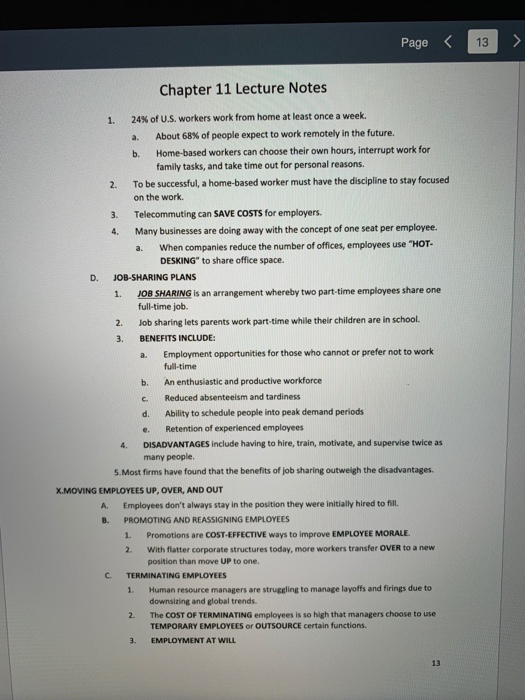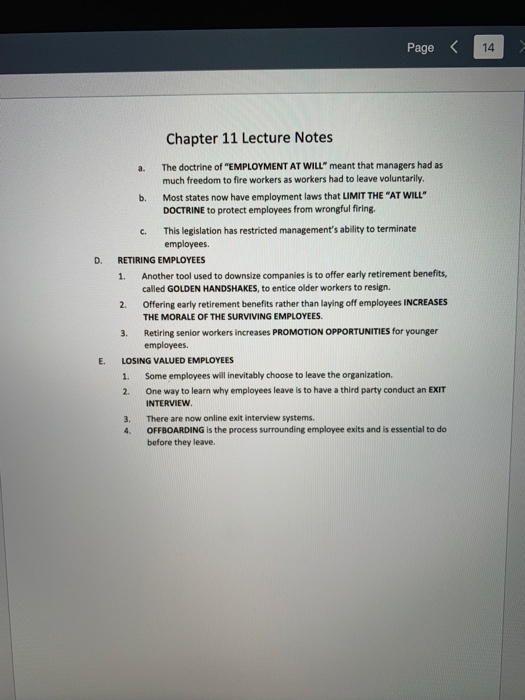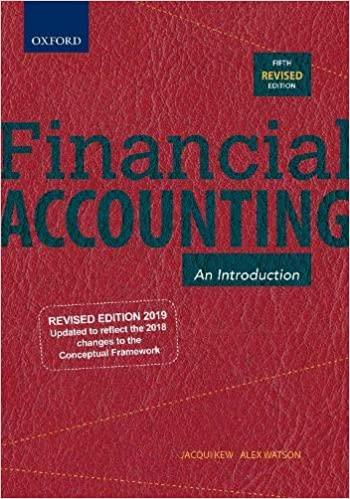Find an example, illustration, or application of this week's topic from any source listed in this week's assignment.
Please post your example to the class (roughly 250+ words) and tie it very specifically into one or more of the concepts under discussion this week. I don't generally count words, however I will from time to time double check the count.
**Provide your own thoughts and ideas for this assignment. If you utilize an article for this assignment, appropriately site your sources. Do not plagiarize your responses for this assignment.
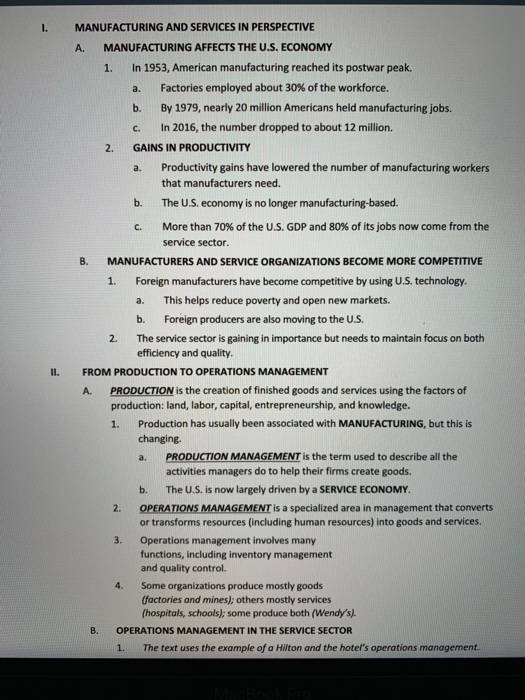
Find an example, illustration, or application of this week's topic from any source listed in this week's assignment.
Please post your example to the class (roughly 250+ words) and tie it very specifically into one or more of the concepts under discussion this week. I don't generally count words, however I will from time to time double check the count.
**Provide your own thoughts and ideas for this assignment. If you utilize an article for this assignment, appropriately site your sources. Do not plagiarize your responses for this assignment.
MANUFACTURING AND SERVICES IN PERSPECTIVE I. MANUFACTURING AFFECTS THE U.S. ECONOMY A. In 1953, American manufacturing reached its postwar peak. 1. Factories employed about 30 % of the workforce. By 1979, nearly 20 million Americans held manufacturing jobs. In 2016, the number dropped to about 12 million. a. b. C. GAINS IN PRODUCTIVITY 2. Productivity gains have lowered the number of manufacturing workers a. that manufacturers need. b. The U.S. economy is no longer manufacturing-based. More than 70% of the U.S. GDP and 80% of its jobs now come from the C. service sector. B. MANUFACTURERS AND SERVICE ORGANIZATIONS BECOME MORE COMPETITIVE Foreign manufacturers have become competitive by using U.S. technology. 1. a. This helps reduce poverty and open new markets. b. Foreign producers are also moving to the U.S. The service sector is gaining in importance but needs to maintain focus on both 2. efficiency and quality. II. FROM PRODUCTION TO OPERATIONS MANAGEMENT PRODUCTION is the creation of finished goods and services using the factors of production: land, labor, capital, entrepreneurship, and knowledge. A. Production has usually been associated with MANUFACTURING, but this is changing. 1. PRODUCTION MANAGEMENT is the term used to describe all the a. activities managers do to help their firms create goods. The U.S. is now largely driven by a SERVICE ECONOMY b. OPERATIONS MANAGEMENT is a specialized area in management that converts or transforms resources (including human resources) into goods and services. 2. 3 Operations management involves many functions, including inventory management and quality control. 4. Some organizations produce mostly goods (factories and mines); others mostly services (hospitals, schools); some produce both (Wendy's). B. OPERATIONS MANAGEMENT IN THE SERVICE SECTOR 1. The text uses the example of a Hilton and the hotel's operations management. The hotel chain makes sure it goes above just offering WiFi and is constantly working on ways to enhance its hotels, like its front desk robot, Connie. 2. In the service industry, operations management is about CREATING A GOOD 3. EXPERIENCE for those who use the service. DELIGHTING CUSTOMERS has become the quality standard for hotels and other 4. service businesses. PRODUCTION PROCESSES PRODUCTION USES BASIC INPUTS TO PRODUCE OUTPUTS A. Production adds VALUE, or UTILITY, to materials or processes. 1. FORM UTILITY is the value added by the creation of finished goods and services, such as the value added by taking silicon and making computer chips or putting services together to create a vacation package. a. Form utility can also be created at the retail level. b. 2. Andrew S. Grove, former chair of Intel, defines the THREE BASICc REQUIREMENTS OF PRODUCTION: To build and deliver products in response to the demands of the customer a. at a scheduled delivery time b. To provide an acceptable quality level To provide everything at the lowest possible cost C. 3. TYPES OF PRODUCTION OPERATIONS PROCESS MANUFACTURING is that part of the production process that physically or chemically changes materials. a. The ASSEMBLY PROCESS is that part of the production process that puts b. together components. 4. CONTINUOUS VERSUS INTERMITTENT PROCESSES A CONTINUOUS PROCESS is a production process in which long production runs turn out finished goods over time. a. An INTERMITTENT PROCESS is a production process in which the production run is short and the machines are changed frequently to produce different products. b. Today, most new manufacturers use intermittent processes. C. B. THE NEED TO IMPROVE PRODUCTION TECHNIQUES AND CUT COSTS The goal of manufacturing and process management is to provide high-quality goods and services instantaneously in response to customer demand. 1. 2. TRADITIONAL ORGANIZATIONS were not designed very responsive th customer. FLEXIBLE MANUFACTURING SYSTEMS let manufacturers custom-make goods as 1. quickly as mass-produced items. Manufacturers are learning to CUSTOMIZE THEIR PRODUCTS for individual customers. (Custom Foot uses infrared scanners to precisely fit shoes.) 2. Mass customization of services is actually easier because there is no tangible good that must be adapted. (Capital Protection Insurance sells customized risk management plans to companies.) ROBOTICS can allow a manufacturer to operate 24-7 and simplify mass customization. 3D PRINTING creates a product one layer at a time; experts think 3D printing can 3. G. H. revolutionize production. SENSORS detect problems immediately and alert someone to make changes. I. . OPERATIONS MANAGEMENT PLANNING Many of the issues covered in operations management planning service and manufacturing sectors. A. are the same in both B. FACILITY LOCATION FACILITY LOCATION is the proce 1. ocess of selecting a geographic location for a company's operations. One strategy is to find a site that makes it EASY FOR CONSUMERS TO USE THE COMPANY'S Service, such as putting flower shops and banks in a. supermarkets. The ultimate convenience is shopping and banking ONLINE. b. The most successful service-sector businesses are conveniently located. C. c. FACILITY LOCATION FOR MANUFACTURERS Detroit was at once the automobile manufacturing hub of the U.S.; Silicon Valley is now the home of many tech industry giants. 1. 2. Manufacturers consider: Labor costs a. b. Availability of resources, including labor Access to transportation that can reduce time to market C. d. Proximity to suppliers Proximity to customers e. f. Crime rates Quality of life for employees B- h. Cost of living i. The need o train or retrain the local workforce Manufacturers often choose sites that are CLOSE TO INEXPENSIVE LABOR or to 3. the RIGHT KIND OF LABOR. LOW-COST LABOR remains the key reason manufacturers move their plants, even though labor cost is becoming a smaller portion of total production costs. a. Firms should maintain the SAME QUALITY STANDARDS AND FAIR LABOR b. PRACTICES wherever they produce. Another reason for relocating facilities is access to INEXPENSIVE RESOURCES. 4. The most important resource is PEOPLE, so companies tend to cluster where 5. they find smart and talented people. REDUCING TIME TO MARKET, such as access to modes of transportation, is critical to successful global competition. 6. 7. Locating CLOSE TO SUPPLIERS cuts the cost of distribution. 8. Many businesses are BUILDING FACTORIES OVERSEAS to get closer to international customers. When U.S. firms select foreign sites, they also study the QUALITY OF LIFE for 9. workers and managers. Site selection has become a critical issue in 10. production and operations management. INTERFIRM OPERATIONS MANAGEMENT D. Many rapidly growing companies OUTSoURCE engineering, design, manufacturing, and other tasks. 1. Companies are creating an INTERFIRM process, creating new relationships with suppliers over the Internet. 2. Coordination between companies can be as close as coordination among departments in a single firm. 3. FACILITY LOCATION IN THE FUTURE E. New developments in information technology are giving firms and employees 1. more FLEXIBILITY in choosing locations. TELECOMMUTING, working from home via computer, is a major trend. 2. Today, a big incentive to locate in a particular location is the TAX SITUATION and DEGREE OF GOVERNMENT SUPPORT. 3. Although some states and local governments have higher taxes, they can offer tax reductions and other supports to attract new businesses. 4. FACILITY LAYOUT F. FACILITY LAYOUT is the physical arrangement of resources (including people) in the production process. 1. The facility layout depends on what processes are to be performed For SERVICES, the layout is usually designed to help the consumer find a. b. and buy things. For MANUFACTURING PLANTS, efficient facilities layout can lead to cost 2. savings. In an ASSEMBLY LINE LAYOUT, workers do only a few tasks at a time a. b. Many firms are moving toward a MODULAR LAYOUT, in which teams of workers combine to produce more complex units of the final product. In a FIXED-POSITION LAYOUT, workers gather around the product to be C. completed. d. A PROCESS LAYOUT is one in which similar equipment and functions are grouped together. MATERIALS REQUIREMENT PLANNING G. MATERIALS REQUIREMENT PLANNING (MRP) is a computer-based production 1. management system that uses sales forecasts to make sure the needed parts and materials are available at the right time and place. ENTERPRISE RESOURCE PLANNING (ERP) is a newer version of MRP that 2. combines the computerized functions of all the divisions and subsidiaries of the firm-such as finance, human resources, and order fulfillment-into a single integrated software program that uses a single database. 3. The result is shorter time between orders and payment plus better customer service. H. PURCHASING 1. PURCHASING is the function in a firm that searches for quality material resources, finds the best suppliers, and negotiates the best price for quality goods and services. 2. Some manufacturers deal with many different suppliers. Others rely more heavily on one or two vendors, and the relationship between suppliers and manufacturers is much closer. 3. ONLINE PURCHASING SERVICES allow companies to find the best supplies at the best price. 4. I. JUST-IN-TIME INVENTORY CONTROL Holding parts and other items in warehouses is one major cost of production. 1. JUST-IN-TIME UIT) INVENTORY CONTROL is a production process in which a 2. minimum of inventory is kept on the premises and parts, supplies, and other needs are delivered just in time to go on the assembly line. an accurate production To work effectively, however, JIT requires a. schedule. Suppliers deliver their products "just in time" to go on the assembly line; b. MINIMUM INVENTORY is kept. To work efficiently, JIT requires CLOSE COORDINATION among selected suppliers. C. JIT systems make sure the right MATERIALS are at the right PLACE at the right time at the cheapest COST to meet customer needs. 3. JIT is problematic when there is significant distance between firms and weather delays. 4. QUALITY CONTROL J. QUALITY is consistently producing what the customer wants while reducing errors before and after delivery to the customer. 1. Historically, quality control was often done at the END OF THE PRODUCTION LINE by a quality control department. a. Quality management occurred after production, when the product has already been b. produced. Companies realized that quality control should be part of the operations C. management planning process. Firms now use MODERN QUALITY CONTROL STANDARDS such as Six Sigma. 2. SIX SIGMA QUALITY is a quality measure that allows only 3.4 defects per a. million opportunities. STATISTICAL QUALITY CONTROL (SQC) is the process some managers use b. to continually monitor all phases of the production process to ensure that quality is being built into the product from the beginning. STATISTICAL PROCESS CONTROL (SPC) is the process of taking statistical c. samples of product components at each stage of the production process and plotting those results on a graph. d. Any variances from quality standards are recognized and can be corrected if beyond the set standards. Checking products against standards all along the production process eliminates the need for quality control inspection at the end. This approach to quality control is often called the DEMING CYCLE (after the late W. Edwards Deming): Plan, Do, Check, Act (PDCA). e f. Emphasis is placed on CUSTOMER SATISFACTION K. THE BALDRIGE AWARDS One standard for quality was set with the introduction of the MALCOLM 1. BALDRIGE NATIONAL QUALITY AWARDS in 1987. To qualify, a company has to show quality in SEVEN KEY AREAS: 2. Leadership a. Strategic planning b. Customer and market focus C. Information and analysis d. Human resources focus e. f. Process management Business results 3. The focus is shifting to provide TOP-QUALITY CUSTOMER SERVICE in all respects. ISO 9001 AND ISO 14001 STANDARDS L 1. The INTERNATIONAL ORGANIZATION FOR STANDARDIZATION (ISO) worldwide federation of national standards bodies that set the global measures for the quality of individual products. is a ISO 9001 is the common name given to quality management and assurance 2. standards. 3. The latest standards are called ISO 9001:2008. The EUROPEAN UNION is demanding that companies doing business with the 4. EU be certified by ISO standards. ISO 14001 is a collection of the best practices for managing an organization's 5. impact on the environment. 6 Today, ISO 9001 and 14001 standards have been blended both at once. so a firm can work on v.CONTROL PROCEDURES: PERT AND GANTT CHARTS The production manager's job is to ensure that products are manufactured and A. delivered on time. B. PROGRAM EVALUATION AND REVIEW TECHNIQUE (PERT) PROGRAM EVALUATION AND REVIEW TECHNIQUE (PERT) is a method for analyzing the tasks involved in completing a given project, estimating the time needed to complete each task, and identifying the minimum time needed to 1. complete the total project. 2. STEPS IN USING PERT Step 1: Analyzing and seguencing tasks that need to be done a. Page Chapter 9 Lecture Notes Step 2: Estimating the time needed to complete each task b. Step 3: Drawing a PERT network illustrating the information from steps 1 c. and 2 Step 4: Identifying the CRITICAL PATH, the sequence of tasks that takes the longest time to complete. (This is referred to as the CRITICAL PATH because a delay in the time needed to complete this path would cause the d. project or production run to be late.) 3. DRAWING A PERT CHART The text uses the example of producing a music video. a. b. SQUARES on the chart indicate COMPLETED TASKS. ARROWS indicate the TIME NEEDED to complete each task. C. The path from one completed task to another shows the relationships d. among tasks. A PERT network can include thousands of events over many months, and is usually done by computer. 4. The GANTT CHART is a bar graph showing production managers what projects are being worked on and what stage they are in at any given time. 5. The Gantt chart calculations, once done by hand, are now computerized. a. Using a Gantt-like computer program, a manager can trace the production b. process minute by minute. VI. PREPARING FOR THE FUTURE There are tremendous opportunities for careers in operations management. A. Relatively few college students major in production and operations management, creating opportunities for those students who do. B. Chapter 10 Lecture Notes The PRINCIPLE OF MOTION ECONOMY is the theory, developed by Frank and Lillian Gilbreth, that every job can be broken down into a series of elementary motions. a. They analyzed every motion ("THERBLIG") to make them more efficient. b. 4. Scientific management viewed PEOPLE AS MACHINES that needed to be properly programmed. There was little concern for the PSYCHOLOGICAL or HUMAN ASPECTS of a. work. b. In some companies, the emphasis is still on CONFORMITY TO WORK RULES rather than on creativity, flexibility, and responsiveness. The text uses the example of UPS. C. ELTON MAYO AND THE HAWTHORNE STUDIES C. 1 The HAWTHORNE STUDIES, begun in 1927, were conducted by Elton Mayo at the Western Electric Company's Hawthorne plant in Cicero, Illinois. The PURPOSE of the studies was to determine the best lighting for optimum productivity. b. The PRODUCTIVITY of the experimental group INCREASED compared to the control group whether the lighting was bright or dim. a. The researchers had expected productivity to fall as the lighting was C. dimmed. A second series of 13 experiments were conducted to see if OTHER FACTORS, such as temperature and humidity, contributed to increased production. 2. EASED during each of the 13 experimental periods. a. b. When conditions were returned to their original status (before the studies were started), PRODUCTIVITY CONTINUED TO GO UP. Why? 3. Mayo guessed that some HUMAN or PSYCHOLOGICAL FACTORS caused the increases The workers in the test room thought of themselves as a SSOCIAL a. GROUP-they felt special and worked hard to stay in the group. b. The workers were involved in the PLANNING of the experiments-they felt that their ideas were respected. The workers enjoyed the SPECIAL ATMOSPHERE and ADDITIONAL PAY for the increased productivity. C. The term HAWTHORNE EFFECT refers to the tendency for people to behave differently when they know they're being studied. 4 The results of this study encouraged researchers to STUDY HUMAN MOTIVATION and the MANAGERIAL STYLES that lead to more productivity. a 2 Chapter 10 Lecture Notes Mayo's findings led to NEW ASSUMPTIONS ABOUT EMPLOYEES b. MONEY was found to be a relatively ineffective motivator. C. MOTIVATION AND MASLOW'S HIERARCHY OF NEEDS II. MASLOW'S HIERARCHY OF NEEDS A. Psychologist Abraham Maslow believed that MOTIVATION ARISES FROM NEED. 1. People are motivated to satisfy unmet needs. a. Satisfied needs NO LONGER MOTIVATE. b. Maslow placed needs on a HIERARCHY of importance. C. MASLOW'S HIERARCHY OF NEEDS is a theory of motivation based on unmet 2. needs, from basic physiological needs to safety, social, and esteem needs to self-actualization needs. PHYSIOLOGICAL NEEDS, basic survival needs including the need for food, water, and shelter a. b. SAFETY NEEDS, the need to feel secure at work and at home SOCIAL NEEDS, the need to feel loved, accepted, and part of the group C. ESTEEM NEEDS, the need for recognition and acknowledgment from others, as well as self-respect and a sense of status or importance d. SELF-ACTUALIZATION NEEDS, the need to develop to one's fullest e. potential When one need is satisfied, the person is motivated to do something to satisfy a B. higher-level need. longer a motivator. 1. A SATISFIED NEED is no If LOWER-LEVEL NEEDS are not met, they may reemerge and take attention 2. away from higher-level needs. Lower-level needs are met and higher-level needs dominate in DEVELOPED COUNTRIES. 3. III. HERZBERG'S MOTIVATING FACTORS FREDERICK HERZBERG used interviews to identify the factors that are most effective in generating enthusiastic work effort. A. Herzberg surveyed workers to find out how they rank JOB-RELATED FACTORS. The results were: 1. Sense of achievement a. b. Earned recognition Interest in the work itself c. d. Opportunity for growth Opportunity for advancement e. f. Importance of responsibility Page Chapter 10 Lecture Notes VARIETY, IDENTITY, and SIGNIFICANCE contribute to meaningfulness of the job. a. AUTONOMY gives people a feeling of responsibility b. FEEDBACK contributes to a feeling of achievement and recognition. C. JOB ENLARGEMENT is a job enrichment strategy that involves combining a series of tasks into one challenging and interesting assignment. OB ROTATION is a job-enrichment strategy that involves moving employees from one job to another. 4. 5. MOTIVATING THROUGH OPEN COMMUNICATION 1. Create an organizational culture that rewards listening. Train supervisors and managers to listen. 2. Use effective questioning techniques. 3. 4. Remove barriers to open communication 5. Avoid vague and ambiguous communication. 6. Make it easy to communicate. Ask employees what is important to them. 7. APPLYING OPEN COMMUNICATION IN SELF-MANAGED TEAMS C. Companies with highly motivated workforces usually have OPEN 1. COMMUNICATION SYSTEMS and SELF-MANAGED TEAMS. When teams are empowered to make decisions, communication must flow 2. freely. The text offers the example of communication among members of self-managed 3 teams at Ford Motor Company. To implement such self-managed teams, companies must REINVENT WORK. 4. In doing so, it is essential that managers behave ethically toward all employees. 5. D. RECOGNIZINGA JOB WELL DONE 1. Letting people know you appreciate their work is more powerful than a bonus alone. 2. Providing advancement opportunity is important in retaining valuable employees. Recognition can be as simple as noticing positive actions out loud. 3. The text gives several examples of companies using recognition to motivate employees. Employees may be motivated by the prospect of future compensation, such as stock options. 4. 5. The same things don't motivate all employees. 6. x.PERSONALIZING MOTIVATION Chapter 11 Lecture Notes WORKING WITH PEOPLE IS JUST THE BEGINNING. I. HUMAN RESOURCE MANAGEMENT is the process of determining human resource A. needs and then recruiting, selecting, developing, motivating, evaluating compensating, and scheduling employees to achieve organizational goals. called "personnel" and managed Historically, human resource management was clerical functions and finding new employees. 1. The role of HRM has evolved because: 2. Organizations recognize employees as their ultimate resource. a. b. Changes in the law have rewritten many traditional practices. B. DEVELOPING THE ULTIMATE RESOURCE The U.S. economy has undergone a major shift from traditional manufacturing industries to service industries that require more HIGHLY TECHNICAL JOB 1. SKILLS Many workers must be retrained for new, more challenging jobs. 2. PEOPLE ARE THE ULTIMATE RESOURCE. 3. In the past, the human resource was plentiful, so there was little need to nurture and develop it. b.Qualified labor is scarcer today, and that makes a. recruiting more difficult. For years, most firms assigned the job of recruiting, selecting, training. evaluating, compensating, motivating, and firing people to FUNCTIONAL DEPARTMENTS 4. HUMAN RESOURCE MANAGEMENT may be the most critical function in the future because it is responsible for the business's most critical resource- 5. people. The role of the human resource management is a FUNCTION OF ALL MANAGERS, not just one department. a. Most human resource functions are SHARED between the human b. resource manager and other managers. THE HUMAN RESOURCE CHALLENGE C The ability of the U.S. business system to compete globally depends on people 1 with good ideas. Some of the CHALLENGES and OPPORTUNITIES include: 2. Uncertainty in global politics and increased attention on hiring immigrants a. Technology, such as talent networks, crowdsourcing, and internal social b. networks Multigenerational workforces-Baby boomers are delaying retirement, Gen Xers and Millennials hold management positions, and Gen Zers are entering the workforce c. Page 3 Chapter 11 Lecture Notes Congress gave the EEOC broad powers to regulate equal employment b. opportunity. For example, the EEOC reduced barriers to employment for those with criminal records-questions about convictions are prohibited on job c. applications and initial interviews. 4. AFFIRMATIVE ACTION PROGRAMS are controversial. AFFIRMATIVE ACTION refers to employment activities designed to "right past wrongs" by increasing opportunities for minorities and women. a Interpretation of the law was often controversial and enforcement was difficult. One result has been the perceived REVERSE DISCRIMINATION, or discrimination against dominant or majority group members in hiring or promoting. C. Companies have been charged with reverse discrimination when they have been PERCEIVED as UNFAIRLY GIVING PREFERENCE in hiring or d promoting. The CIVIL RIGHTS ACT OF 1991 expanded the remedies available to victims of 5. discrimination by amending Title VII of the CRA of 1964. The OFFICE OF FEDERAL CONTRACT COMPLIANCE PROGRAMS (OFCCP) ensures compliance in firms doing business with the federal government. 6. LAWS PROTECTING EMPLOYEES WITH DISABILITIES AND OLDER EMPLOYEES This act, passed in 1973, extended the same protection to people with disabilities. 1 The AMERICANS WITH DISABILITIES ACT OF 1990 (ADA) requires that applicants who are disabled be given the same consideration for employment as people without disabilities. 2. It requires that businesses make "REASONABLE ACCOMMODATIONS" to people with disabilities. a b Most companies can easily and inexpensively make the structural changes needed. However, companies are having more trouble making CULTURAL CHANGES to be accommodating. C. d. A key concept is ACCOMMODATION, which means treating people according to their specific needs. 3. In 2008 Congress passed the AMERICANS WITH DISABILITIES AMENDMENTS ACT. This overturned Supreme Court decisions that had reduced protections for people with disabilities. a. 02 Page Chapter 11 Lecture Notes In 2011, the EEOC widened the range of disabilities and shifted the burden b. of proof of disabilities to owners. The AGE DISCRIMINATION IN EMPLOYMENT ACT protects individuals who are 4. 40 years or older from discrimination based on age. Under the ADEA, it is UNLAWFUL TO DISCRIMINATE AGAINST A PERSON a BECAUSE OF AGE with respect to hiring, firing, promotion, layoff, compensation, benefits, job assignments, and training. The ADEA OUTLAWED MANDATORY RETIREMENT in most organizations, b. but provides exemptions for certain critical jobs. EFFECTS OF LEGISLATION C All areas of human resource management are affected by legislation. 1. IN SUMMARY 2. Employers must know and act in accordance with the legal rights of their a. employees. Legislation affects all areas of human resource management. b. It is sometimes legal to provide special employment to correct past discrimination. C. New court cases and legislation continuously change human resource d management; it is important to keep current. II. DETERMINING A FIRM'S HUMAN RESOURCE NEEDS PREPARING A HUMAN RESOURCE INVENTORY of the organization's employees A. PREPARING A JOB ANALYSIS B. A JOB ANALYSSIS is a study of what is done by employees who hold various jobs. 1. The results of the job analysis are two written statements. 2. A JOB DESCRIPTION is a summary of the objectives of a job, the type of a. work to be done, the responsibilities and duties, the working conditions, and the relationship of the job to other functions JOB SPECIFICATIONS are written summaries of the minimum qualifications required of workers to do a particular job. b. ASSESSING FUTURE HUMAN RESOURCE DEMAND-HR managers must be proactive to anticipate future needs of their organizations. C. ASSESSING FUTURE LABOR SUPPLY in a constantly changing labor market D. ESTABLISHINGA STRATEGIC PLAN addressing recruiting, selecting, training and developing, appraising, compensating, and scheduling the labor force E. Companies are using information technologies to manage the human resource F. planning process more efficiently. t MANUFACTURING AND SERVICES IN PERSPECTIVE I. MANUFACTURING AFFECTS THE U.S. ECONOMY A. In 1953, American manufacturing reached its postwar peak. 1. Factories employed about 30 % of the workforce. By 1979, nearly 20 million Americans held manufacturing jobs. In 2016, the number dropped to about 12 million. a. b. C. GAINS IN PRODUCTIVITY 2. Productivity gains have lowered the number of manufacturing workers a. that manufacturers need. b. The U.S. economy is no longer manufacturing-based. More than 70% of the U.S. GDP and 80% of its jobs now come from the C. service sector. B. MANUFACTURERS AND SERVICE ORGANIZATIONS BECOME MORE COMPETITIVE Foreign manufacturers have become competitive by using U.S. technology. 1. a. This helps reduce poverty and open new markets. b. Foreign producers are also moving to the U.S. The service sector is gaining in importance but needs to maintain focus on both 2. efficiency and quality. II. FROM PRODUCTION TO OPERATIONS MANAGEMENT PRODUCTION is the creation of finished goods and services using the factors of production: land, labor, capital, entrepreneurship, and knowledge. A. Production has usually been associated with MANUFACTURING, but this is changing. 1. PRODUCTION MANAGEMENT is the term used to describe all the a. activities managers do to help their firms create goods. The U.S. is now largely driven by a SERVICE ECONOMY b. OPERATIONS MANAGEMENT is a specialized area in management that converts or transforms resources (including human resources) into goods and services. 2. 3 Operations management involves many functions, including inventory management and quality control. 4. Some organizations produce mostly goods (factories and mines); others mostly services (hospitals, schools); some produce both (Wendy's). B. OPERATIONS MANAGEMENT IN THE SERVICE SECTOR 1. The text uses the example of a Hilton and the hotel's operations management. The hotel chain makes sure it goes above just offering WiFi and is constantly working on ways to enhance its hotels, like its front desk robot, Connie. 2. In the service industry, operations management is about CREATING A GOOD 3. EXPERIENCE for those who use the service. DELIGHTING CUSTOMERS has become the quality standard for hotels and other 4. service businesses. PRODUCTION PROCESSES PRODUCTION USES BASIC INPUTS TO PRODUCE OUTPUTS A. Production adds VALUE, or UTILITY, to materials or processes. 1. FORM UTILITY is the value added by the creation of finished goods and services, such as the value added by taking silicon and making computer chips or putting services together to create a vacation package. a. Form utility can also be created at the retail level. b. 2. Andrew S. Grove, former chair of Intel, defines the THREE BASICc REQUIREMENTS OF PRODUCTION: To build and deliver products in response to the demands of the customer a. at a scheduled delivery time b. To provide an acceptable quality level To provide everything at the lowest possible cost C. 3. TYPES OF PRODUCTION OPERATIONS PROCESS MANUFACTURING is that part of the production process that physically or chemically changes materials. a. The ASSEMBLY PROCESS is that part of the production process that puts b. together components. 4. CONTINUOUS VERSUS INTERMITTENT PROCESSES A CONTINUOUS PROCESS is a production process in which long production runs turn out finished goods over time. a. An INTERMITTENT PROCESS is a production process in which the production run is short and the machines are changed frequently to produce different products. b. Today, most new manufacturers use intermittent processes. C. B. THE NEED TO IMPROVE PRODUCTION TECHNIQUES AND CUT COSTS The goal of manufacturing and process management is to provide high-quality goods and services instantaneously in response to customer demand. 1. 2. TRADITIONAL ORGANIZATIONS were not designed very responsive th customer. FLEXIBLE MANUFACTURING SYSTEMS let manufacturers custom-make goods as 1. quickly as mass-produced items. Manufacturers are learning to CUSTOMIZE THEIR PRODUCTS for individual customers. (Custom Foot uses infrared scanners to precisely fit shoes.) 2. Mass customization of services is actually easier because there is no tangible good that must be adapted. (Capital Protection Insurance sells customized risk management plans to companies.) ROBOTICS can allow a manufacturer to operate 24-7 and simplify mass customization. 3D PRINTING creates a product one layer at a time; experts think 3D printing can 3. G. H. revolutionize production. SENSORS detect problems immediately and alert someone to make changes. I. . OPERATIONS MANAGEMENT PLANNING Many of the issues covered in operations management planning service and manufacturing sectors. A. are the same in both B. FACILITY LOCATION FACILITY LOCATION is the proce 1. ocess of selecting a geographic location for a company's operations. One strategy is to find a site that makes it EASY FOR CONSUMERS TO USE THE COMPANY'S Service, such as putting flower shops and banks in a. supermarkets. The ultimate convenience is shopping and banking ONLINE. b. The most successful service-sector businesses are conveniently located. C. c. FACILITY LOCATION FOR MANUFACTURERS Detroit was at once the automobile manufacturing hub of the U.S.; Silicon Valley is now the home of many tech industry giants. 1. 2. Manufacturers consider: Labor costs a. b. Availability of resources, including labor Access to transportation that can reduce time to market C. d. Proximity to suppliers Proximity to customers e. f. Crime rates Quality of life for employees B- h. Cost of living i. The need o train or retrain the local workforce Manufacturers often choose sites that are CLOSE TO INEXPENSIVE LABOR or to 3. the RIGHT KIND OF LABOR. LOW-COST LABOR remains the key reason manufacturers move their plants, even though labor cost is becoming a smaller portion of total production costs. a. Firms should maintain the SAME QUALITY STANDARDS AND FAIR LABOR b. PRACTICES wherever they produce. Another reason for relocating facilities is access to INEXPENSIVE RESOURCES. 4. The most important resource is PEOPLE, so companies tend to cluster where 5. they find smart and talented people. REDUCING TIME TO MARKET, such as access to modes of transportation, is critical to successful global competition. 6. 7. Locating CLOSE TO SUPPLIERS cuts the cost of distribution. 8. Many businesses are BUILDING FACTORIES OVERSEAS to get closer to international customers. When U.S. firms select foreign sites, they also study the QUALITY OF LIFE for 9. workers and managers. Site selection has become a critical issue in 10. production and operations management. INTERFIRM OPERATIONS MANAGEMENT D. Many rapidly growing companies OUTSoURCE engineering, design, manufacturing, and other tasks. 1. Companies are creating an INTERFIRM process, creating new relationships with suppliers over the Internet. 2. Coordination between companies can be as close as coordination among departments in a single firm. 3. FACILITY LOCATION IN THE FUTURE E. New developments in information technology are giving firms and employees 1. more FLEXIBILITY in choosing locations. TELECOMMUTING, working from home via computer, is a major trend. 2. Today, a big incentive to locate in a particular location is the TAX SITUATION and DEGREE OF GOVERNMENT SUPPORT. 3. Although some states and local governments have higher taxes, they can offer tax reductions and other supports to attract new businesses. 4. FACILITY LAYOUT F. FACILITY LAYOUT is the physical arrangement of resources (including people) in the production process. 1. The facility layout depends on what processes are to be performed For SERVICES, the layout is usually designed to help the consumer find a. b. and buy things. For MANUFACTURING PLANTS, efficient facilities layout can lead to cost 2. savings. In an ASSEMBLY LINE LAYOUT, workers do only a few tasks at a time a. b. Many firms are moving toward a MODULAR LAYOUT, in which teams of workers combine to produce more complex units of the final product. In a FIXED-POSITION LAYOUT, workers gather around the product to be C. completed. d. A PROCESS LAYOUT is one in which similar equipment and functions are grouped together. MATERIALS REQUIREMENT PLANNING G. MATERIALS REQUIREMENT PLANNING (MRP) is a computer-based production 1. management system that uses sales forecasts to make sure the needed parts and materials are available at the right time and place. ENTERPRISE RESOURCE PLANNING (ERP) is a newer version of MRP that 2. combines the computerized functions of all the divisions and subsidiaries of the firm-such as finance, human resources, and order fulfillment-into a single integrated software program that uses a single database. 3. The result is shorter time between orders and payment plus better customer service. H. PURCHASING 1. PURCHASING is the function in a firm that searches for quality material resources, finds the best suppliers, and negotiates the best price for quality goods and services. 2. Some manufacturers deal with many different suppliers. Others rely more heavily on one or two vendors, and the relationship between suppliers and manufacturers is much closer. 3. ONLINE PURCHASING SERVICES allow companies to find the best supplies at the best price. 4. I. JUST-IN-TIME INVENTORY CONTROL Holding parts and other items in warehouses is one major cost of production. 1. JUST-IN-TIME UIT) INVENTORY CONTROL is a production process in which a 2. minimum of inventory is kept on the premises and parts, supplies, and other needs are delivered just in time to go on the assembly line. an accurate production To work effectively, however, JIT requires a. schedule. Suppliers deliver their products "just in time" to go on the assembly line; b. MINIMUM INVENTORY is kept. To work efficiently, JIT requires CLOSE COORDINATION among selected suppliers. C. JIT systems make sure the right MATERIALS are at the right PLACE at the right time at the cheapest COST to meet customer needs. 3. JIT is problematic when there is significant distance between firms and weather delays. 4. QUALITY CONTROL J. QUALITY is consistently producing what the customer wants while reducing errors before and after delivery to the customer. 1. Historically, quality control was often done at the END OF THE PRODUCTION LINE by a quality control department. a. Quality management occurred after production, when the product has already been b. produced. Companies realized that quality control should be part of the operations C. management planning process. Firms now use MODERN QUALITY CONTROL STANDARDS such as Six Sigma. 2. SIX SIGMA QUALITY is a quality measure that allows only 3.4 defects per a. million opportunities. STATISTICAL QUALITY CONTROL (SQC) is the process some managers use b. to continually monitor all phases of the production process to ensure that quality is being built into the product from the beginning. STATISTICAL PROCESS CONTROL (SPC) is the process of taking statistical c. samples of product components at each stage of the production process and plotting those results on a graph. d. Any variances from quality standards are recognized and can be corrected if beyond the set standards. Checking products against standards all along the production process eliminates the need for quality control inspection at the end. This approach to quality control is often called the DEMING CYCLE (after the late W. Edwards Deming): Plan, Do, Check, Act (PDCA). e f. Emphasis is placed on CUSTOMER SATISFACTION K. THE BALDRIGE AWARDS One standard for quality was set with the introduction of the MALCOLM 1. BALDRIGE NATIONAL QUALITY AWARDS in 1987. To qualify, a company has to show quality in SEVEN KEY AREAS: 2. Leadership a. Strategic planning b. Customer and market focus C. Information and analysis d. Human resources focus e. f. Process management Business results 3. The focus is shifting to provide TOP-QUALITY CUSTOMER SERVICE in all respects. ISO 9001 AND ISO 14001 STANDARDS L 1. The INTERNATIONAL ORGANIZATION FOR STANDARDIZATION (ISO) worldwide federation of national standards bodies that set the global measures for the quality of individual products. is a ISO 9001 is the common name given to quality management and assurance 2. standards. 3. The latest standards are called ISO 9001:2008. The EUROPEAN UNION is demanding that companies doing business with the 4. EU be certified by ISO standards. ISO 14001 is a collection of the best practices for managing an organization's 5. impact on the environment. 6 Today, ISO 9001 and 14001 standards have been blended both at once. so a firm can work on v.CONTROL PROCEDURES: PERT AND GANTT CHARTS The production manager's job is to ensure that products are manufactured and A. delivered on time. B. PROGRAM EVALUATION AND REVIEW TECHNIQUE (PERT) PROGRAM EVALUATION AND REVIEW TECHNIQUE (PERT) is a method for analyzing the tasks involved in completing a given project, estimating the time needed to complete each task, and identifying the minimum time needed to 1. complete the total project. 2. STEPS IN USING PERT Step 1: Analyzing and seguencing tasks that need to be done a. Page Chapter 9 Lecture Notes Step 2: Estimating the time needed to complete each task b. Step 3: Drawing a PERT network illustrating the information from steps 1 c. and 2 Step 4: Identifying the CRITICAL PATH, the sequence of tasks that takes the longest time to complete. (This is referred to as the CRITICAL PATH because a delay in the time needed to complete this path would cause the d. project or production run to be late.) 3. DRAWING A PERT CHART The text uses the example of producing a music video. a. b. SQUARES on the chart indicate COMPLETED TASKS. ARROWS indicate the TIME NEEDED to complete each task. C. The path from one completed task to another shows the relationships d. among tasks. A PERT network can include thousands of events over many months, and is usually done by computer. 4. The GANTT CHART is a bar graph showing production managers what projects are being worked on and what stage they are in at any given time. 5. The Gantt chart calculations, once done by hand, are now computerized. a. Using a Gantt-like computer program, a manager can trace the production b. process minute by minute. VI. PREPARING FOR THE FUTURE There are tremendous opportunities for careers in operations management. A. Relatively few college students major in production and operations management, creating opportunities for those students who do. B. Chapter 10 Lecture Notes The PRINCIPLE OF MOTION ECONOMY is the theory, developed by Frank and Lillian Gilbreth, that every job can be broken down into a series of elementary motions. a. They analyzed every motion ("THERBLIG") to make them more efficient. b. 4. Scientific management viewed PEOPLE AS MACHINES that needed to be properly programmed. There was little concern for the PSYCHOLOGICAL or HUMAN ASPECTS of a. work. b. In some companies, the emphasis is still on CONFORMITY TO WORK RULES rather than on creativity, flexibility, and responsiveness. The text uses the example of UPS. C. ELTON MAYO AND THE HAWTHORNE STUDIES C. 1 The HAWTHORNE STUDIES, begun in 1927, were conducted by Elton Mayo at the Western Electric Company's Hawthorne plant in Cicero, Illinois. The PURPOSE of the studies was to determine the best lighting for optimum productivity. b. The PRODUCTIVITY of the experimental group INCREASED compared to the control group whether the lighting was bright or dim. a. The researchers had expected productivity to fall as the lighting was C. dimmed. A second series of 13 experiments were conducted to see if OTHER FACTORS, such as temperature and humidity, contributed to increased production. 2. EASED during each of the 13 experimental periods. a. b. When conditions were returned to their original status (before the studies were started), PRODUCTIVITY CONTINUED TO GO UP. Why? 3. Mayo guessed that some HUMAN or PSYCHOLOGICAL FACTORS caused the increases The workers in the test room thought of themselves as a SSOCIAL a. GROUP-they felt special and worked hard to stay in the group. b. The workers were involved in the PLANNING of the experiments-they felt that their ideas were respected. The workers enjoyed the SPECIAL ATMOSPHERE and ADDITIONAL PAY for the increased productivity. C. The term HAWTHORNE EFFECT refers to the tendency for people to behave differently when they know they're being studied. 4 The results of this study encouraged researchers to STUDY HUMAN MOTIVATION and the MANAGERIAL STYLES that lead to more productivity. a 2 Chapter 10 Lecture Notes Mayo's findings led to NEW ASSUMPTIONS ABOUT EMPLOYEES b. MONEY was found to be a relatively ineffective motivator. C. MOTIVATION AND MASLOW'S HIERARCHY OF NEEDS II. MASLOW'S HIERARCHY OF NEEDS A. Psychologist Abraham Maslow believed that MOTIVATION ARISES FROM NEED. 1. People are motivated to satisfy unmet needs. a. Satisfied needs NO LONGER MOTIVATE. b. Maslow placed needs on a HIERARCHY of importance. C. MASLOW'S HIERARCHY OF NEEDS is a theory of motivation based on unmet 2. needs, from basic physiological needs to safety, social, and esteem needs to self-actualization needs. PHYSIOLOGICAL NEEDS, basic survival needs including the need for food, water, and shelter a. b. SAFETY NEEDS, the need to feel secure at work and at home SOCIAL NEEDS, the need to feel loved, accepted, and part of the group C. ESTEEM NEEDS, the need for recognition and acknowledgment from others, as well as self-respect and a sense of status or importance d. SELF-ACTUALIZATION NEEDS, the need to develop to one's fullest e. potential When one need is satisfied, the person is motivated to do something to satisfy a B. higher-level need. longer a motivator. 1. A SATISFIED NEED is no If LOWER-LEVEL NEEDS are not met, they may reemerge and take attention 2. away from higher-level needs. Lower-level needs are met and higher-level needs dominate in DEVELOPED COUNTRIES. 3. III. HERZBERG'S MOTIVATING FACTORS FREDERICK HERZBERG used interviews to identify the factors that are most effective in generating enthusiastic work effort. A. Herzberg surveyed workers to find out how they rank JOB-RELATED FACTORS. The results were: 1. Sense of achievement a. b. Earned recognition Interest in the work itself c. d. Opportunity for growth Opportunity for advancement e. f. Importance of responsibility Page Chapter 10 Lecture Notes VARIETY, IDENTITY, and SIGNIFICANCE contribute to meaningfulness of the job. a. AUTONOMY gives people a feeling of responsibility b. FEEDBACK contributes to a feeling of achievement and recognition. C. JOB ENLARGEMENT is a job enrichment strategy that involves combining a series of tasks into one challenging and interesting assignment. OB ROTATION is a job-enrichment strategy that involves moving employees from one job to another. 4. 5. MOTIVATING THROUGH OPEN COMMUNICATION 1. Create an organizational culture that rewards listening. Train supervisors and managers to listen. 2. Use effective questioning techniques. 3. 4. Remove barriers to open communication 5. Avoid vague and ambiguous communication. 6. Make it easy to communicate. Ask employees what is important to them. 7. APPLYING OPEN COMMUNICATION IN SELF-MANAGED TEAMS C. Companies with highly motivated workforces usually have OPEN 1. COMMUNICATION SYSTEMS and SELF-MANAGED TEAMS. When teams are empowered to make decisions, communication must flow 2. freely. The text offers the example of communication among members of self-managed 3 teams at Ford Motor Company. To implement such self-managed teams, companies must REINVENT WORK. 4. In doing so, it is essential that managers behave ethically toward all employees. 5. D. RECOGNIZINGA JOB WELL DONE 1. Letting people know you appreciate their work is more powerful than a bonus alone. 2. Providing advancement opportunity is important in retaining valuable employees. Recognition can be as simple as noticing positive actions out loud. 3. The text gives several examples of companies using recognition to motivate employees. Employees may be motivated by the prospect of future compensation, such as stock options. 4. 5. The same things don't motivate all employees. 6. x.PERSONALIZING MOTIVATION Chapter 11 Lecture Notes WORKING WITH PEOPLE IS JUST THE BEGINNING. I. HUMAN RESOURCE MANAGEMENT is the process of determining human resource A. needs and then recruiting, selecting, developing, motivating, evaluating compensating, and scheduling employees to achieve organizational goals. called "personnel" and managed Historically, human resource management was clerical functions and finding new employees. 1. The role of HRM has evolved because: 2. Organizations recognize employees as their ultimate resource. a. b. Changes in the law have rewritten many traditional practices. B. DEVELOPING THE ULTIMATE RESOURCE The U.S. economy has undergone a major shift from traditional manufacturing industries to service industries that require more HIGHLY TECHNICAL JOB 1. SKILLS Many workers must be retrained for new, more challenging jobs. 2. PEOPLE ARE THE ULTIMATE RESOURCE. 3. In the past, the human resource was plentiful, so there was little need to nurture and develop it. b.Qualified labor is scarcer today, and that makes a. recruiting more difficult. For years, most firms assigned the job of recruiting, selecting, training. evaluating, compensating, motivating, and firing people to FUNCTIONAL DEPARTMENTS 4. HUMAN RESOURCE MANAGEMENT may be the most critical function in the future because it is responsible for the business's most critical resource- 5. people. The role of the human resource management is a FUNCTION OF ALL MANAGERS, not just one department. a. Most human resource functions are SHARED between the human b. resource manager and other managers. THE HUMAN RESOURCE CHALLENGE C The ability of the U.S. business system to compete globally depends on people 1 with good ideas. Some of the CHALLENGES and OPPORTUNITIES include: 2. Uncertainty in global politics and increased attention on hiring immigrants a. Technology, such as talent networks, crowdsourcing, and internal social b. networks Multigenerational workforces-Baby boomers are delaying retirement, Gen Xers and Millennials hold management positions, and Gen Zers are entering the workforce c. Page 3 Chapter 11 Lecture Notes Congress gave the EEOC broad powers to regulate equal employment b. opportunity. For example, the EEOC reduced barriers to employment for those with criminal records-questions about convictions are prohibited on job c. applications and initial interviews. 4. AFFIRMATIVE ACTION PROGRAMS are controversial. AFFIRMATIVE ACTION refers to employment activities designed to "right past wrongs" by increasing opportunities for minorities and women. a Interpretation of the law was often controversial and enforcement was difficult. One result has been the perceived REVERSE DISCRIMINATION, or discrimination against dominant or majority group members in hiring or promoting. C. Companies have been charged with reverse discrimination when they have been PERCEIVED as UNFAIRLY GIVING PREFERENCE in hiring or d promoting. The CIVIL RIGHTS ACT OF 1991 expanded the remedies available to victims of 5. discrimination by amending Title VII of the CRA of 1964. The OFFICE OF FEDERAL CONTRACT COMPLIANCE PROGRAMS (OFCCP) ensures compliance in firms doing business with the federal government. 6. LAWS PROTECTING EMPLOYEES WITH DISABILITIES AND OLDER EMPLOYEES This act, passed in 1973, extended the same protection to people with disabilities. 1 The AMERICANS WITH DISABILITIES ACT OF 1990 (ADA) requires that applicants who are disabled be given the same consideration for employment as people without disabilities. 2. It requires that businesses make "REASONABLE ACCOMMODATIONS" to people with disabilities. a b Most companies can easily and inexpensively make the structural changes needed. However, companies are having more trouble making CULTURAL CHANGES to be accommodating. C. d. A key concept is ACCOMMODATION, which means treating people according to their specific needs. 3. In 2008 Congress passed the AMERICANS WITH DISABILITIES AMENDMENTS ACT. This overturned Supreme Court decisions that had reduced protections for people with disabilities. a. 02 Page Chapter 11 Lecture Notes In 2011, the EEOC widened the range of disabilities and shifted the burden b. of proof of disabilities to owners. The AGE DISCRIMINATION IN EMPLOYMENT ACT protects individuals who are 4. 40 years or older from discrimination based on age. Under the ADEA, it is UNLAWFUL TO DISCRIMINATE AGAINST A PERSON a BECAUSE OF AGE with respect to hiring, firing, promotion, layoff, compensation, benefits, job assignments, and training. The ADEA OUTLAWED MANDATORY RETIREMENT in most organizations, b. but provides exemptions for certain critical jobs. EFFECTS OF LEGISLATION C All areas of human resource management are affected by legislation. 1. IN SUMMARY 2. Employers must know and act in accordance with the legal rights of their a. employees. Legislation affects all areas of human resource management. b. It is sometimes legal to provide special employment to correct past discrimination. C. New court cases and legislation continuously change human resource d management; it is important to keep current. II. DETERMINING A FIRM'S HUMAN RESOURCE NEEDS PREPARING A HUMAN RESOURCE INVENTORY of the organization's employees A. PREPARING A JOB ANALYSIS B. A JOB ANALYSSIS is a study of what is done by employees who hold various jobs. 1. The results of the job analysis are two written statements. 2. A JOB DESCRIPTION is a summary of the objectives of a job, the type of a. work to be done, the responsibilities and duties, the working conditions, and the relationship of the job to other functions JOB SPECIFICATIONS are written summaries of the minimum qualifications required of workers to do a particular job. b. ASSESSING FUTURE HUMAN RESOURCE DEMAND-HR managers must be proactive to anticipate future needs of their organizations. C. ASSESSING FUTURE LABOR SUPPLY in a constantly changing labor market D. ESTABLISHINGA STRATEGIC PLAN addressing recruiting, selecting, training and developing, appraising, compensating, and scheduling the labor force E. Companies are using information technologies to manage the human resource F. planning process more efficiently. t

